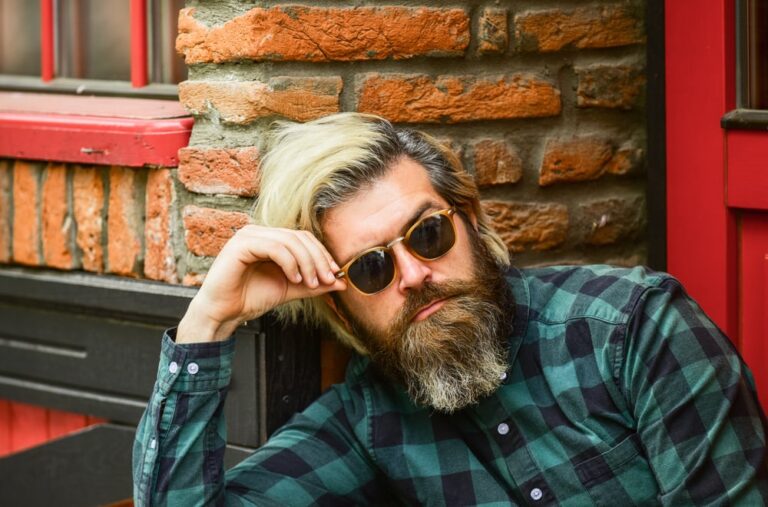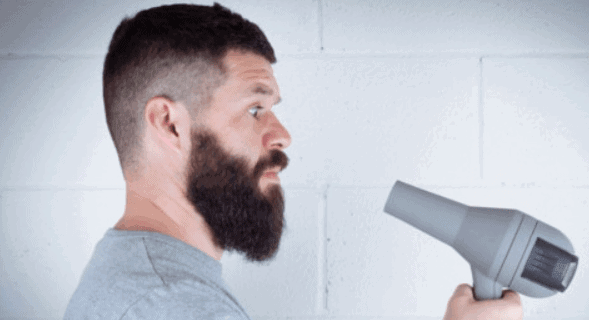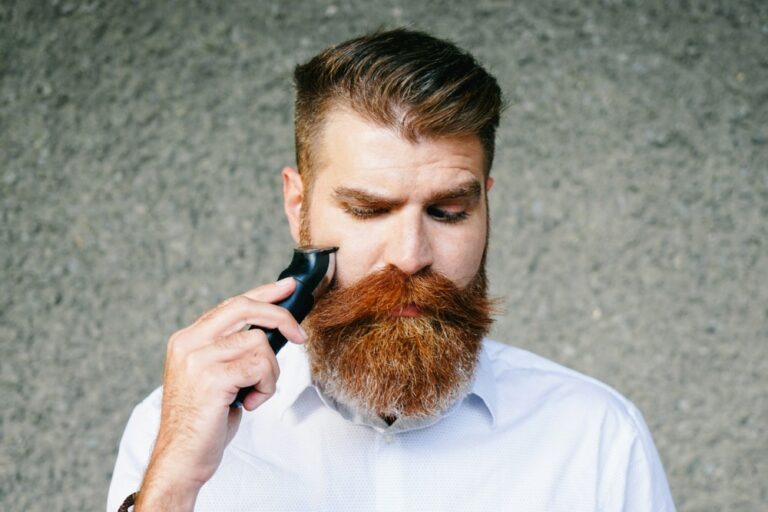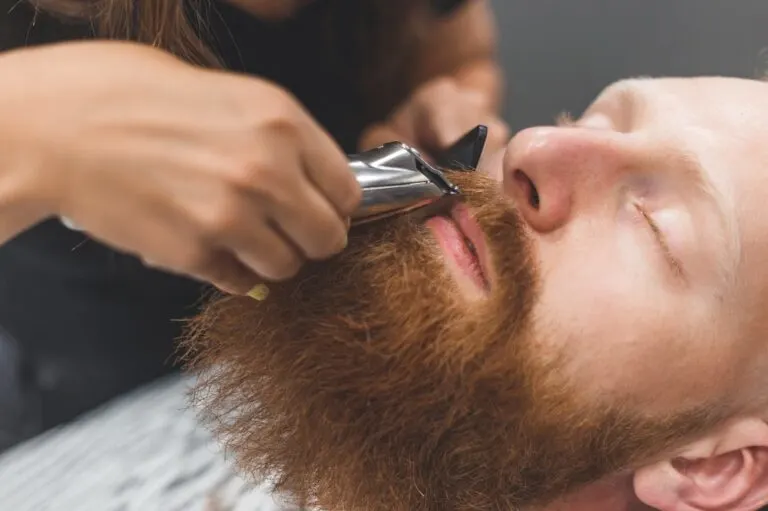Should You Dye Your Beard? Pros and Cons
Should you dye your beard? That’s the question you’re going to ask yourself as soon as your beard starts to gray or when you want to match your beard color with hair. The answer to that comes down to the pros and cons of dyeing your beard.
While some think greys in a beard can be great, others would like to hide theirs. But regardless of why you want to dye your beard, the many pros and cons of doing so are worth considering.
In this guide, we’ll review everything you need to know about dyeing your beard before you start.
Pros Of Dyeing Your Beard
it’s worth starting with the pros since dyeing your hair isn’t just for people with graying hair. Instead, it’s also a great way to express yourself.
Hide the greys in beard
One of the main reasons men choose to dye their beard is to hide grey facial hair. You might have just a few strands of gray throughout your beard, but they make it look unkempt.
So you can easily fill in patches of gray or even those pesky gray strands of beard hair, giving it a more uniform look.
Provide a Youthful Look
The best thing about dyeing your beard is that it makes you look significantly younger. A colored beard can also look good when you have already dyed your hair.
If you have an event or a reunion with friends you haven’t met in a while, dyeing your beard can be a great way to leave a lasting impression.
Confidence boost
Beard dyes come in all sorts of colors. So you can find the best one that matches your specific style and start to express yourself. You can also ask your barber which color would go well with the hair you’re getting and try out that beard as well.
Conceal patchy beard
Dyeing your beard can conceal imperfections or blemishes in your facial hair. This can be useful if you have patches of uneven growth or thinning areas that you’d like to hide.
Match beard and hair color
Though it’s not mandatory, matching your hair and beard color is important for a natural appearance. If you work in a field where appearance is a significant factor, such as sales or customer service dyeing your beard can provide a more polished and professional look.
So, Unless it’s a stylistic choice, you should match your hair color with your beard.
Cons of Dyeing Your Beard
While dyeing your hair can offer plenty of advantages, it does come with a few cons that you have to consider.
Possibility of fake appearance
Beards generally have a few inconsistencies that can make them look much more natural. No one’s beard is ever fully black, and they will usually have strands of red, brown, and gray hairs in their beard. But by dyeing your hair, everything looks a little too perfect, which gives it that unnatural look.
It can damage your facial hair
For the dye to settle into the beard, it strips the hair strands of their proteins and natural colors. So if you dye your hair often, this process can leave your hair in a weakened state and lead to your hair drying out or becoming brittle.
Time and effort
Dying your beard is not a quick or easy process. It requires time and effort to properly apply the dye, wait for it to set, and then rinse it out. Additionally, depending on the type of dye you use, you may need to reapply it every few weeks to maintain the desired color.
Staining skin
One potential drawback of dyeing your beard is that it can stain your skin. If the dye comes into contact with your skin, it can leave a temporary stain that can be difficult to remove.
Should You Dye Your Beard?
Whether or not to dye your beard is a personal choice that depends on several factors, including your skin sensitivity, hair type and texture, and maintenance preferences.
While dyeing your beard can help cover up gray hairs or achieve a more uniform appearance, it can also have potential drawbacks such as skin irritation, time and effort, uneven color, fake appearance, and staining skin.
So, the decision to dye your beard is up to you and what makes you feel confident and comfortable in your own skin.
After knowing all the pros and cons of coloring a beard, if you have decided to dye consider these:
Use organic ingredients to avoid allergic reactions
When you thought of dyeing your beard, the first thing to turn you off was people talking about allergic reactions. Allergic reactions from beard dyes happen because of PPD. You can find plenty of natural beard dyes in the market that is free of PPD and feature organic ingredients.
Going to a professional
Another important question is, “Should I dye my beard myself?” The process may look simple, but it is a little complicated. You don’t want your beard to look flat while ensuring the color properly reaches every part of your beard. For that, you will have to go to a professional.
Paying that premium
Whether you go to a professional or decide to do it yourself, dyeing your beard is not cheap. Even if you decide to do it yourself, you must buy a few tools to apply the color first. And if you go to a professional, you must pay for their services. So, either way, you look at it, dyeing your hair can be a little expensive.
Alternatives to Dyeing Your Beard
If you’re not keen on dyeing your beard, there are a few alternatives to consider.
Embrace the grey
Many people find that their grey beard adds character and makes them look distinguished. In fact, some men purposely dye their beard grey to achieve this look. If you are feeling unsure about embracing it, try looking at some cool grey beard styles.
Trim your beard shorter
This can be a good option if you’re not ready to commit to dyeing your beard but still want to improve your appearance. You can also choose a short grey beard style for a sophisticated look.
Using beard oil or balm
If you’re looking for a more natural option, you can try using beard oil or balm to nourish and condition your beard. This will provide a temporary darker appearance to your beard.
How Often Should You Dye Your Beard?
A general rule for dyeing your beard is to do it every six to eight weeks to ensure that you give your beard plenty of time to recover from the chemicals used in the dye.
You can drop it down to four weeks, but after that, your beard hair will start to thin. However, use dyes with more organic ingredients, if you want to dye your beard any sooner than four weeks.
Common Myths About Beard Dyeing
You have probably heard a lot about dyeing beards, and most of that is either overblown or taken out of context. Here are some of those myths.
Dyeing your beard will cause hair to grow back thicker and darker.
Fact: Dyeing your beard does not affect the growth rate or thickness of your hair. It only changes the color of the existing hair. When your hair grows back, it will still have the same characteristics as before.
Once you start dyeing your beard, you can never stop.
Fact: You can stop dyeing your beard whenever you want. The hair dye will eventually fade and grow out naturally, and you can trim or shave your beard to remove any leftover dyed hair.
FAQ’s
Is it safe to dye your beard?
It is generally safe to dye your beard, but it’s important to choose a dye that is specifically formulated for facial hair and to follow the instructions carefully.
Can beard dye cause skin irritation?
Some beard dyes can cause skin irritation, especially in people with sensitive skin. It’s important to test the dye on a small patch of skin before using it on your entire beard.
Can I dye my beard at home?
You can dye your beard at home, but it’s important to follow the instructions carefully and choose a dye that is specifically formulated for facial hair.
Is it ok to choose a different beard and hair color?
If you want to stand out in the crowd with a stylish look it is ok to dye your beard a different color than your hair. But if you want a natural look you should match your hair color with beard.
So, dyeing your beard can have both pros and cons. It’s important to carefully consider your personal preferences and the potential risks before making a decision.






